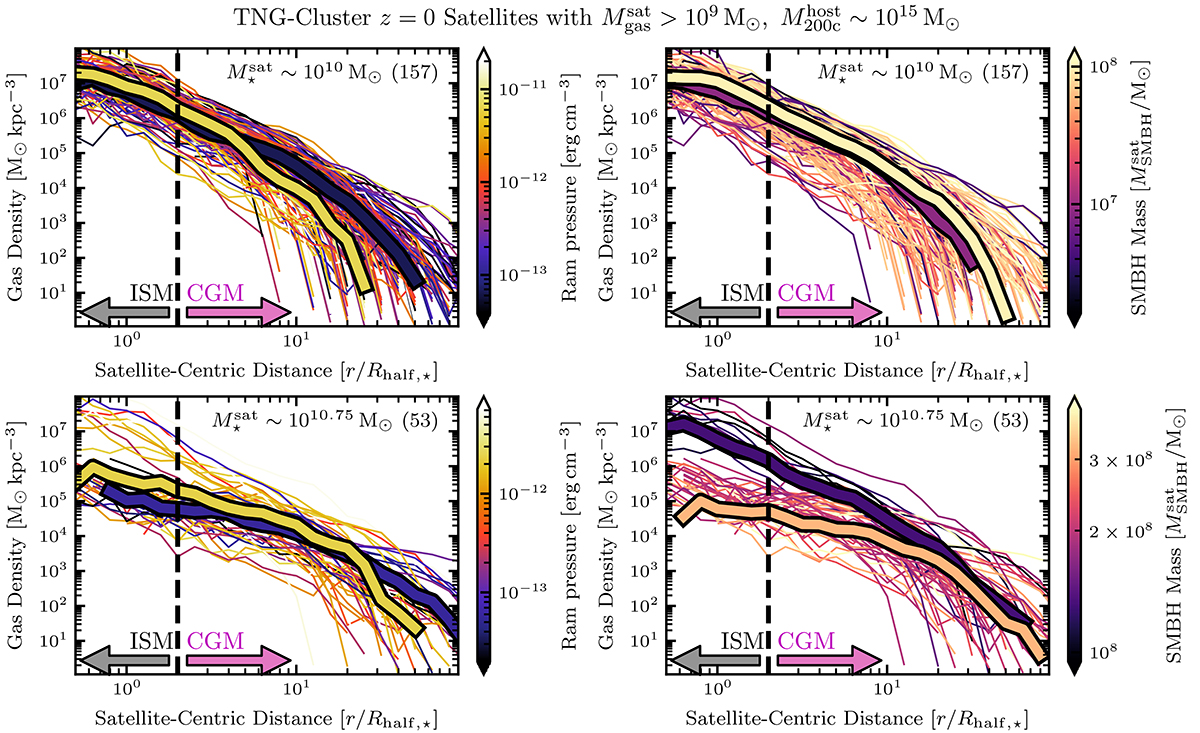Fig. 4.

Download original image
How ram pressure and SMBHs affect the gas contents of TNG-Cluster satellite galaxies. For the gas-rich ![]() satellites at a fixed cluster
satellites at a fixed cluster ![]() and satellite
and satellite ![]() (top versus bottom panels) mass, we show total gas density radial profiles colored by current ram pressure (left column) and SMBH mass (right column). The thick curves show the medians of the top and bottom quartiles of ram pressure and SMBH mass, and the thin curves are the profiles of the individual satellites. Ram pressure tends to truncate the gas profiles at large distances and slightly compress the ISM gas, while SMBH feedback tends to eject and decrease the density of the ISM gas for more massive satellites.
(top versus bottom panels) mass, we show total gas density radial profiles colored by current ram pressure (left column) and SMBH mass (right column). The thick curves show the medians of the top and bottom quartiles of ram pressure and SMBH mass, and the thin curves are the profiles of the individual satellites. Ram pressure tends to truncate the gas profiles at large distances and slightly compress the ISM gas, while SMBH feedback tends to eject and decrease the density of the ISM gas for more massive satellites.
Current usage metrics show cumulative count of Article Views (full-text article views including HTML views, PDF and ePub downloads, according to the available data) and Abstracts Views on Vision4Press platform.
Data correspond to usage on the plateform after 2015. The current usage metrics is available 48-96 hours after online publication and is updated daily on week days.
Initial download of the metrics may take a while.


